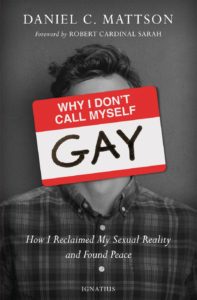
At the bottom of this post is a video of dogs and cats who apparently never “got the memo” that they are supposed to fear and hate each other. As the video makes clear, they are bosom buddies who love to romp, play, wrestle, and even snuggle. How unlikely! And yet there it is before our eyes.
While the interactions between animals are mysterious and not to be compared with human relationships, I can’t help thinking of humanity as I watch them. What would things be like if some of the “memos” we pass back and forth were torn up, lost, or never received?
I remember some years ago when the former Yugoslavia broke apart. It was good news, as Soviet-style rule there ended. But then a horrible bloodbath ensued and the Bosnian, Serbians, and Croatians turned on one another, rekindling old hatreds going back hundreds of years. I remember wondering how people who had lived largely without violence for so long could still hate one another so. It seemed that the injustices of the past predated most of the people who were alive at the time.
Bosnian, Serbian, and Croatian babies are not born hating one another; it must be instilled by someone. When the longtime “strongman” Tito died in 1980, dormant hatreds that had been handed down from parent to child surfaced.
I realize that I may be oversimplifying things, but there is also the tendency to overcomplicate matters. The fact is, children do not enter this world with an intrinsic hatred of an entire group of other children. Someone teaches them that. That part isn’t complicated.
When I was a child, I lived in Chicago, Illinois. I don’t remember my parents ever telling me to hate or even be wary of black people; I give them a lot of credit for that. Neither do I remember any awareness of racial tension or hatred in my neighborhood. However, I was still very young and the racial riots that followed Dr. King’s assassination did not really register in my 7-year-old mind.
In 1969, though, we moved to Northern Florida (think “Southern Georgia”). There, racial tension was always in the air. I remember being bewildered by the unexplained resentments and fears. I guess I was too young. In addition, I was a newcomer and had not “read the memo” telling me that I should be suspicious, that I should hate, that I should in no way mix with “them.” I remember once seeing some black children across the playground who were playing with what I thought were some “really cool” toys. Intrigued, I went over to join them. I was rebuffed not only by fellow whites but also by some of the black children, who seemed to consider my “incursion” unwanted and even threatening.
It’s crazy stuff. We are not born hating any person, any race, or any ethnicity. Someone teaches us that. This very fact increases the total disgrace that such hatred is. You may call me naive and simplistic—even myopic—but I wonder what might happen if we could just “tear up the memo.”
The Catechism of the Catholic Church makes some very helpful observations:
Deliberate hatred is contrary to charity. Hatred of the neighbor is a sin when one deliberately wishes him evil. Hatred of the neighbor is a grave sin when one deliberately desires him grave harm. “But I say to you, Love your enemies and pray for those who persecute you, so that you may be sons of your Father who is in heaven” (CCC #2303).
Respect for and development of human life require peace. Peace is not merely the absence of war, and it is not limited to maintaining a balance of powers between adversaries. Peace cannot be attained on earth without safeguarding the goods of persons, free communication among men, respect for the dignity of persons and peoples, and the assiduous practice of fraternity. Peace is the “tranquility of order.” Peace is the work of justice and the effect of charity (CCC #2304).
Injustice, excessive economic or social inequalities, envy, distrust, and pride raging among men and nations constantly threaten peace and cause wars. Everything done to overcome these disorders contributes to building up peace and avoiding war: Insofar as men are sinners, the threat of war hangs over them and will so continue until Christ comes again; but insofar as they can vanquish sin by coming together in charity, violence itself will be vanquished and these words will be fulfilled: “they shall beat their swords into plowshares, and their spears into pruning hooks; nation shall not lift up sword against nation, neither shall they learn war any more” (CCC #2317).
Well, if nothing else, enjoy this video of animals who never “got the memo” that they are supposed to be mortal enemies and consider joining me in the dream that we humans will do the same.





